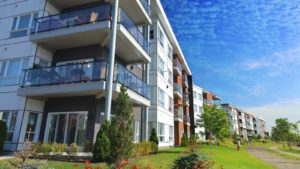In the current world, having a robust and dependable Wireless signal is essential, particularly in multi-dwelling settings like flats or condominiums. Many individuals depend on the internet for work, school, and leisure activities. However, Wi-Fi transmissions can struggle to reach every corner of these structures due to various obstacles. These obstacles can consist of partitions, levels, and other electronic equipment that interfere with the connection. To enhance Wi-Fi connectivity and performance in these settings, it is important to understand some foundational concepts of Wi-Fi communication.
One effective way to boost Wireless operation is by intelligently positioning gateways and access points throughout the property. A central location is usually best, as it allows the coverage to propagate evenly in all areas. In spacious multi-unit residences, multiple access points may be required. These devices assist increase the reach of the wireless infrastructure and deliver stronger service to occupants in different sections of the structure. Additionally, deploying devices that support the current Wi-Fi protocols can result in higher bandwidth and better overall efficiency.

Another key aspect in improving Wi-Fi signal strength is reducing interference from other devices. Many household appliances, such as ovens and cordless phones, can disrupt wireless transmissions. It is recommended to position routers away from these devices to maintain a more stable signal. Additionally, modifying the frequency settings on a router can help reduce conflict from adjacent networks. mdu cable internet Most devices automatically select the most suitable channel, but manually choosing a less crowded one can improve efficiency.
Periodically updating device software is also crucial for ensuring maximum Wi-Fi stability. Vendors routinely release updates that fix issues and improve security measures. Keeping the software current ensures that residents take advantage of the most recent enhancements and protections against possible threats. Furthermore, monitoring bandwidth usage assists in detect which devices utilize more bandwidth, allowing for better allocation of existing capacity.
Finally, informing users about best practices for utilizing Wi-Fi can significantly enhance their experience. Simple steps such as connecting only necessary units, using Ethernet connections when possible, and routinely rebooting the device can make a difference. By creating a culture that understands how to maximize their Wi-Fi efficiency, multi-dwelling environments can elevate user experience and ensure that all users enjoys a consistent read this Wi-Fi service. This integrated method of strategic deployment, minimizing conflict, managing equipment, and informing users will result in a more efficient and satisfying Wi-Fi usage for all residents.